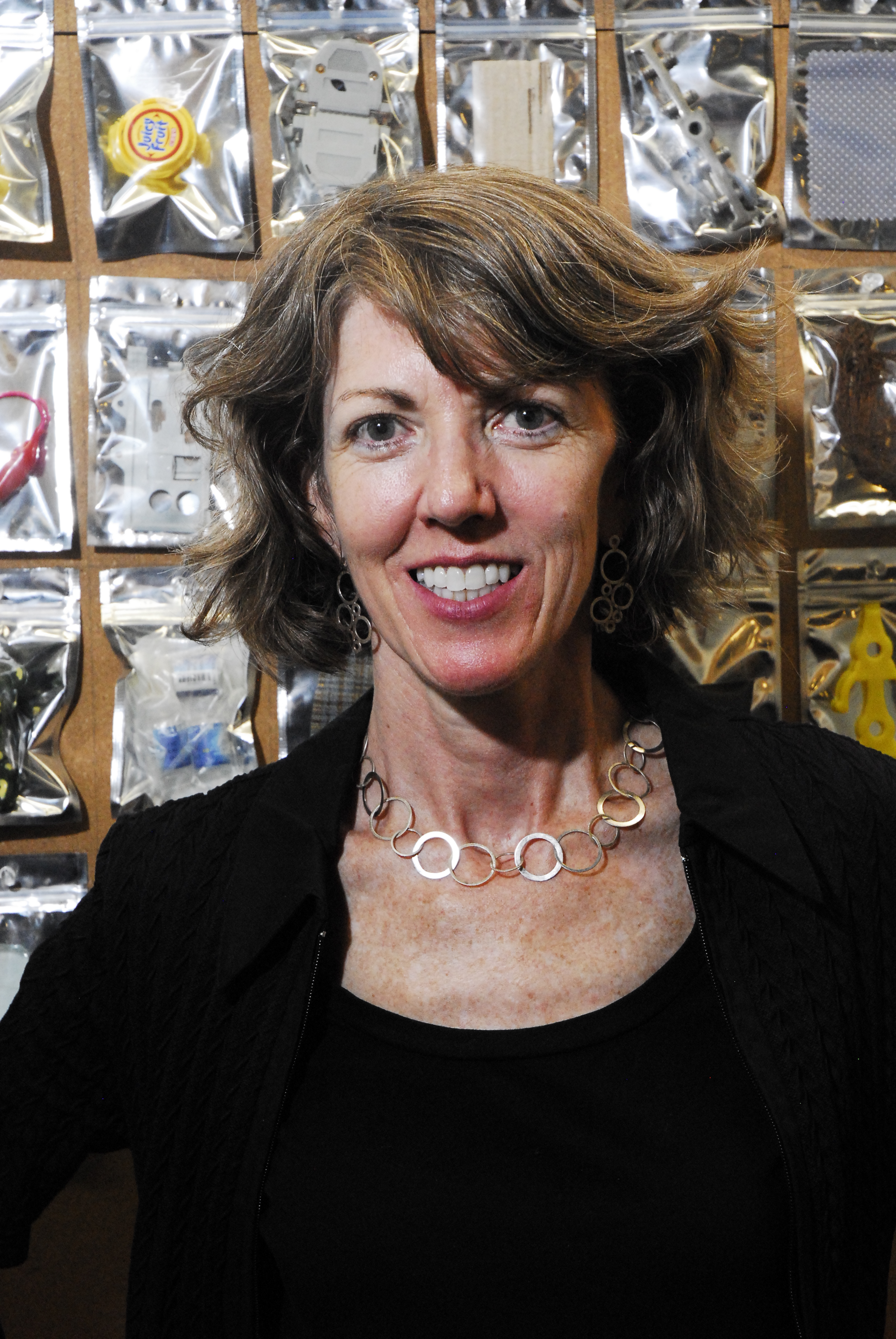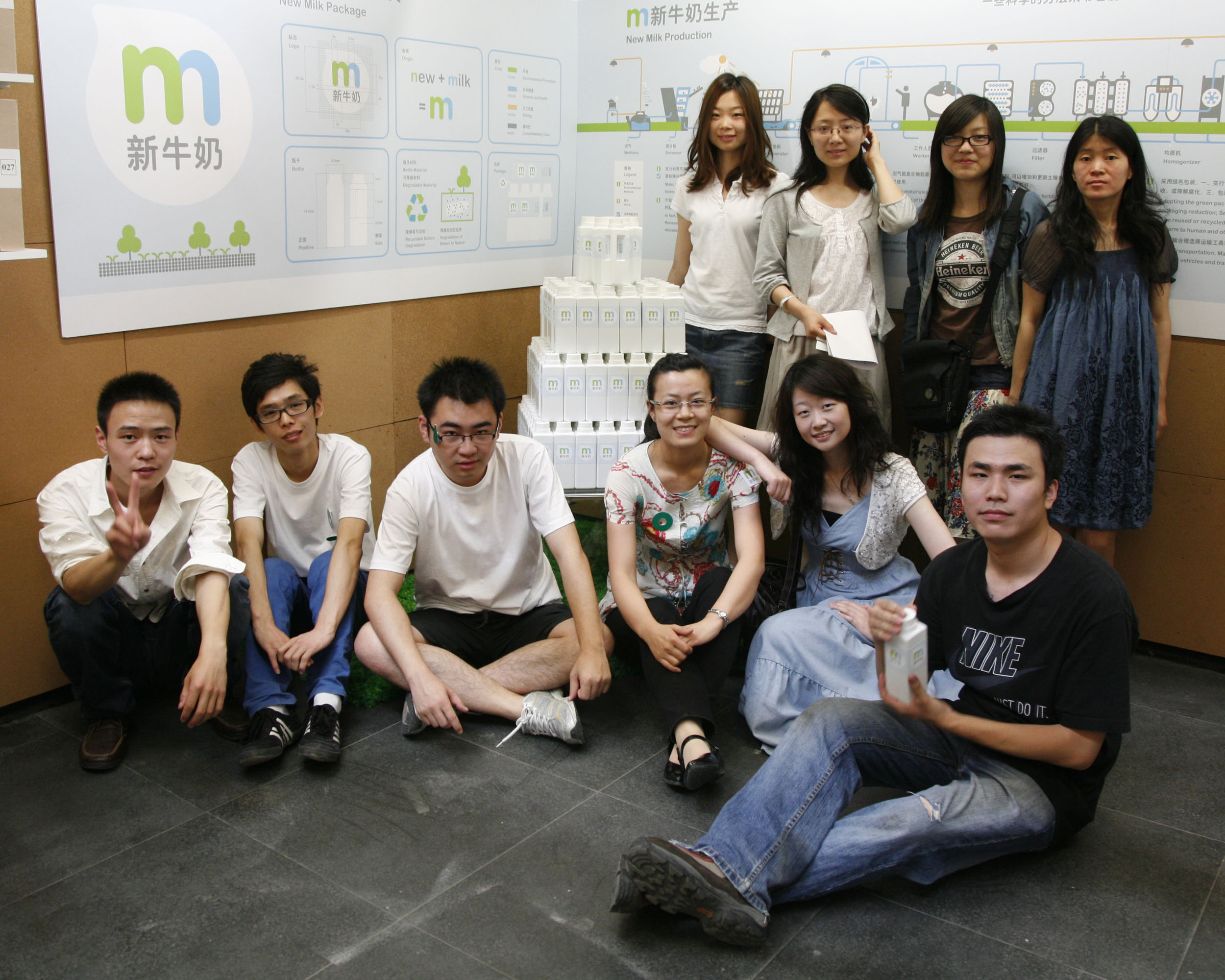| Amy Gendler: China By Design
By PENLOPE COLVILLE

"Empathy", Amy Gendler said to her mostly American companions in a social group one Sunday this spring, "represents one of the most significant developmental challenges my Chinese design students face. Being able to put yourself in another person's shoes is key to being a good designer." Of the social import of the students' success, she is also clear, "It is imperative that China think about design in a new way". By that she means embrace strategic, research-based, problem-solving approaches, because "Design is not about making beautiful things; it may not even be about things. It's about strategic solutions for sustainability. China needs to think of it this way, and this way now."
The world business and professional leaders she has in mind to lead the charge will be coming from China itself: " There are so many designers in China – a million students at any given time and over 250,000 graduating every year. That's way more than the US, the UK, Germany, France and Australia," Gendler says, and you know that she knows what's at stake. She's taught at CAFA for the last four years, as head of Studio 5 in the School of Design, but the other hat she wears is just as important. Gendler is the representative for AIGA in China, a US-based professional association for design. China is its first and only overseas office, though it works its values agenda in other countries like India , South Africa, Europe and South America.
AIGA started out as the American Institute of Graphic Artists but the acronym has remained while the name was dropped; the organization's concerns have grown since its inception in 1914. AIGA is partnering here to support design education and to promote awareness among design professionals and business leaders. Enabling conversations with Chinese designers, around sustainability among other things, is one way of welcoming them into the community of global designers. "And that is not a one way thing", Gendler asserts, " every year Chinese designers have more to offer the wider international conversation. However, China is only recently becoming a consumer of design so on the client-consumer side a lot of training and education is needed."
The government has been championing good design; they see how important it is but need to go one step further, seeing design and innovation as more than just a way of beating the lowly label of " the world's factory".
Success will also ultimately depend on the sophistication and ability of China's designers and it is here that many challenges present themselves. Those start with what people understand by design, and at CAFA they are busy redefining it. As Gendler explains it, "I tell my students that everything is designed, from objects to processes. "I said to some rural school children who had no idea what design was 'look around you'. Everything in this room was designed, everything you are wearing or touching, the chair you are sitting on, the building you are sitting in ; even the way you are going to get home from school is designed." And Gendler adds a more formal definition," design is working through a set of processes to an imagined solution or result', noting that could be redesigning a supply chain and logistics for a business process, diagrams or what is called information graphics that encompass signs and wayfinding, or explaining figures or states of a system as it changes. Stanford University, for example, has a design program within their business school because design is a really important part of business and vice versa.
Important politically too because of the environmental danger. "It might be that China is on the cusp of making all the mistakes that we made in the West, not just in terms of cars but in the case of everything." In the 1980s she travelled by train in China and noted that they served the meals in paper boxes that were then discarded in the isles, swept up by personnel and pushed out the back door. "If you looked out the train window you would see mountains of paper lunchboxes and I remember thinking if China goes for Styrofoam we're doomed; of course they did… So in that scenario there are a couple of issues from a social standpoint. "
Many Chinese have learned that once something is out of their space its gone; they are no longer responsible for any negative impacts of their behaviors or processes. But Western designers are not blameless on that score.
Gendler is merciless describing her experience with the Egg, or National Center for Performing Arts , designed by a foreign architect: "The stairs go down at an angle and have no railing; at night the lights shine right into your eyes so you can't even see your feet. Taxis can't stop at the main entrance; you end up leaving on a bus, which for anyone disabled or aged is a problem. One of the things that happens in China is this sort of dance where the boss or someone on the client side has input and gets face, so even in the case of a reputable international team of architects promoting a better solution, probably someone came along and said the stairway has to be here, or the railings spoil the aesthetics. There is an adage in design: show the clients solutions you can live with, not a bad design, because you may get stuck with it."
Asked what China is doing well, and why she devotes herself so passionately to the mission she has carved out for herself here over more than 25 years, Gendler expresses her optimism while refusing to gloss over the deficits. "Historically and by necessity the Chinese are ingenious at creating something out of nothing. I have slides and slides of objects that have been created to fill a need when there might not have been the materials we think would be useful to fill that need." Looking at the bigger picture, she notes, "In wind power China beat out the leading Scandinavian company in just a couple of years, but I think they could put an even higher value on design thinking.' To her it's obvious that design can provide solutions that change people's lives fundamentally – not just produce a better rice cooker. On the government and commercial side she feels there is still a lot to learn about design, not to mention the consumer side.
 Designers care less now about how something looks; they ask about a product's "cradle to cradle" lifecycle: this project provided 'death certificates" for various materials. Designers care less now about how something looks; they ask about a product's "cradle to cradle" lifecycle: this project provided 'death certificates" for various materials.
Gendler thinks it's in the national character to 'make do' and create something out of trash or things weren't seen to have those possibilities . "Other cultures have done that too at various points in their history but China seems particularly geared towards it." Materials are repurposed for everything; she cites protecting a tree with old doors, stools made out of scraps of wood or chess pieces improvised from orange segments and bits of broken tile.
Historically and by necessity the Chinese are ingenious at creating something out of nothing, but research is a totally new thing for Chinese students.
Resourcefulness is admirable but what does Gendler think her influence over that army of emerging Chinese designers counts for? After all, it is to help evolve design thinking and to promote holistic design that AIGA is promoting its standards in China. Gendler's CAFA "studio" has a reputation for being a tough course and she is the only non-Chinese on staff, yet as the professor responsible for Studio 5 – the International Studio in Visual Communication –she has a fifth of Visual Communication majors under her wing. CAFA works on an atelier system: towards the end of the second year students individually apply to get into the studio where they will spend a good part of their last two years maintaining a focus on major assignments and projects. Students enter Studio 5 knowing they will have more work to do than in other choices they had.
The focus of each studio is the line or specialty of the supervising professor and Studio 5 is devoted to environmental and social innovation. "Even though my background is very visual and esoteric, a strategic and holistic approach has been Studio 5's way of viewing or using design. In the 50s and 60s we didn't necessarily think of design that way. I don't want to label what we are doing here; it is a work in progress." Gendler herself is a work in progress, and her association with China is long, natural and deep. Her undergraduate degree from Yale in Art History with a concentration in design led to six years of work in Asia in the mid 80's. Living in Taiwan she had begun to study the Chinese language while working as a graphic designer in a Chinese public relations company. By 1989, she was teaching a pilot course in the field for Tongji University of Shanghai, where a fledgling industrial design program was underway. She returned to the US to get a Master of Fine Arts at Rhode Island School of Design and did her thesis on Chinese calligraphy and Taoist Philosophy, deriving a unique approach to contemporary design. She knew as soon as she got to Taiwan that here was a new passion: Chinese culture to go with her existing passion for design. " I needed to combine design and China. I never really left China; I was always going back and forth during the years I worked in the US, giving workshops or courses, doing research or just traveling. "
Her students take the risk of meeting her demanding standards, and she took a risk with their learning outcomes this year. "I really pushed to focus on the research component, deciding the process was more important than the result. So the emphasis was off the visual - the product - and more on the process." She wanted students to get skills they hadn't gotten in their education so far – either in secondary school or at CAFA in their first two years.
The skill they most needed was to gather information effectively, taping into all kinds of sources. "They can go on the internet but are just learning how to do searches that are functional", and she elaborates, 'they needed to move on to conducting interviews with people, doing experiments, designing and using surveys … in short being objective and expansive, then conducting analysis and synthesis. Most notably my students have a difficult time finding a point of view."
Creative thinking, problem-solving, creative research and empathy are essential to good design; empathy perhaps most of all.
Ten of her students graduated this year, each with a diverse, largely conceptual project. This year's theme for a final project was environmental and social innovation, very broadly defined, with proposals adjudicated by two invited professors. One student went deeply into Chinese philosophy and morals; she determined one of the things missing in contemporary China was the idea of caring, giving without the expectation of getting something back. Another provided "death certificates" or biodegradability estimates for various production materials. The top score was achieved by Wang Yan who looked into the production of milk and consolidated her findings on green production methods from interviews with producers and visits to dairy farms. She came to a bit of an impasse when she heard from one farm that they were unsure of their own product. So she built and described process standards for "New Milk", an ideal design for a milk production facility with a completely trustworthy product. "My own criticism" Gendler explains, " was she put all that good milk in plastic bottles at the end , which I considered the weak link, even though the bottles were bio-degradable. I reminded her that even in her childhood yoghurt was delivered in glass bottles, a resource managed by each community."
 Designing for good, not just looking good: 10 of China's 1 million design students end their program at CAFA. Designing for good, not just looking good: 10 of China's 1 million design students end their program at CAFA.
Industry in China has been slow to pick up on the broader dimensions of design and understand its value. In her opinion, "Design is so new here the tendency is to see it as purely a visual exercise. We need design that does good, not just design that looks good. At CAFA we are trying to redefine good design that results in better choices; that's why education of the consumer is so important." When confronted with a "cute" rice cooker , instead of buying it the informed consumer should ask how much power it uses and whether it will last a long time. As design thinking takes hold in a more sophisticated China her hope is that things will improve environmentally. That's what AIGA aims for too. The organization is in the process of establishing a small Advisory Board and National Committee of about 150 design educators that will make it easier to facilitate initiatives across China. By promoting intellectual property or contractual standards, and sharing information on environmental projects, AIGA is testifying to China's importance in that strategic battle. "Its office here is seen as a model for international offices" and Gendler speculates "the global economic crisis has pushed this agenda forward to some extent." At CAFA she believes her group is learning about the world in a much more direct way than students in other studios. "This is my way of changing China and the world – that my students will go out and broadcast through their practice what they know."
|



